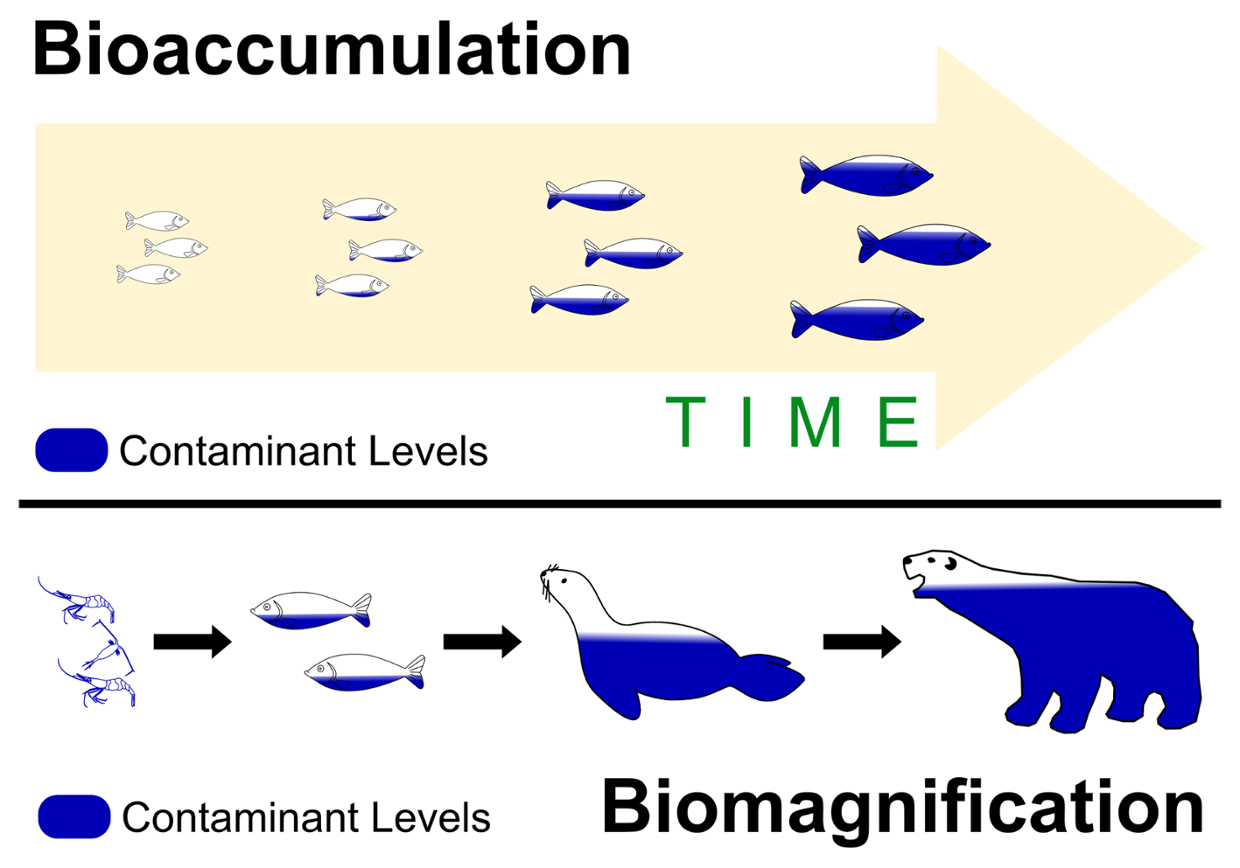Why are PCBs Harmful?
PCBs end up in our environment, including our lakes and rivers. Here they persist and travel up through the food chain, in some cases having ongoing impacts to humans and the environment. Low concentrations in the river build up (bioaccumulate) to higher concentrations in fish. This is a serious issue, particularly for people that consume fish from the Spokane River. Exposure to PCBs can result in skin ailments and liver damage, and they are a probable carcinogen. PCBs also have negative health effects on immune, reproductive, nervous, and endocrine systems. It is difficult to precisely calculate PCB source contributions due to low PCB concentrations and natural variability.
Bioaccumulation
Bioaccumulation occurs when an organism is exposed to a toxin over time.
Biomagnification occurs as toxins build up in concentration up the food chain.
Bioaccumulation occurs when an organism is exposed to a toxic over time. Biomagnification occurs as toxins build up in concentration up the food chain.
PCB Reduction Challenge
PCBs are not only a legacy pollutant. US EPA regulations, under the Toxics Substances Control Act (TSCA), still allow for the production of “inadvertent” PCBs. This Federal allowance of 50 parts per million (ppm) is much larger than the Washington water quality standard for PCBs at 0.000000007 ppm, and the Spokane Tribal water quality standard of 0.0000000013 ppm. Recent testing by the Department of Ecology found that PCBs are present in commonly used consumer products. Forty-nine of 68 products tested contained PCBs (Dept. of Ecology, 2014). Ecology tested 133 more products in 2015 and found that 72% of the samples contained PCBs above 1 part per billion (Ecology, 2016). Conflicting regulations pertaining to PCBs and inadvertent production of PCBs can make it very difficult to fully address the PCB problem.
